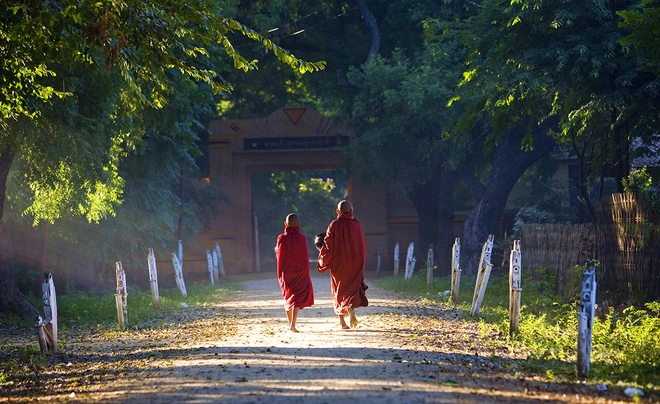The Buddha, you are a typical example of living with nature. The Buddha often chooses locations in the forest for meditation, and most of his life is spent in remote and secluded mountains, away from the dirt and noise of the city.
Every day, he walks and when someone needs to be taught, the Buddha goes to teach them. He also encourages his disciples to go on foot to give teachings. Monks and nuns often walk mindfully in villages early in the morning. Most of the time during the day, the Buddha practices meditation because controlling the breath is beneficial for both physical and mental health.
Similarly, modern scientific research shows that people who regularly practice meditation have a peaceful and calm mind, free from stress and negativity.
On the other hand, when someone’s mind is unstable, it can cause physical and mental changes, leading to the risk of various diseases in different organs such as the heart, liver, and kidneys, according to Traditional Chinese Medicine, it can harm the organs such as the liver, lungs, spleen, and kidneys.
Currently, Western psychotherapists are also using meditation as a method to prevent, treat, and recover from mental disorders.

In ancient times, for 45 years of teaching in the vast area along both banks of the Ganges River, the Buddha only used one means of transportation, walking. In the scriptures, it is said that the Buddha is always mindful in every moment, so when he walks, he is also meditating.
Walking can be another wonderful opportunity to practice mindfulness. Every second can enhance mindfulness and sometimes be an easier object of meditation than breath.
In Buddhist philosophy, mindfulness is awareness, being present to what is happening in the present moment, without judgment or comparison. Walking meditation is considered one of the effective methods for practicing mindfulness. This technique brings many benefits, helps the body feel balanced and peaceful, and is suitable for practicing within the vicinity of the home during the pandemic.
Walking meditation can help release distracting thoughts and mental noise by immersing yourself in the beauty and simplicity around you, like observing the smallest, cutest, and most peaceful details on a flowing stream. But the best thing about walking meditation is that you can practice it anywhere.
Living with Optimism During Pregnancy: Strategies for Success
The importance of leading a balanced lifestyle during pregnancy cannot be overstated. Ensuring that the mother and unborn child get ample nutrition and emotional support, living an optimistic and positive life during this period can lead to a healthy and successful birth for the baby. Here’s what you need to know about maintaining an optimistic attitude throughout your pregnancy.
“8 Things You Should Avoid Saying During a Job Interview”
Job interviews often involve a delicate balancing act between being frank and being too blunt. While it is important for candidates to be honest and show their true personalities, too much candor could lead to them forfeiting prospective job opportunities. In an ideal world, both sides would be able to have open and honest discussions about the job, yet this is not always possible in reality.



































